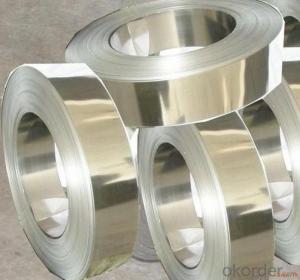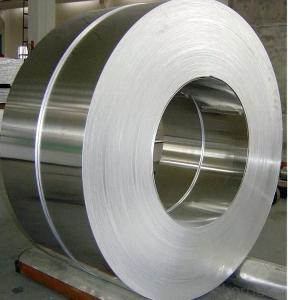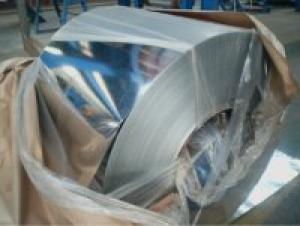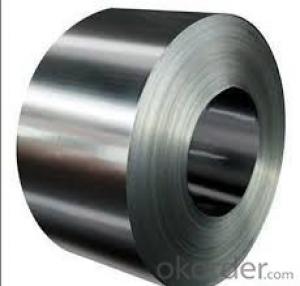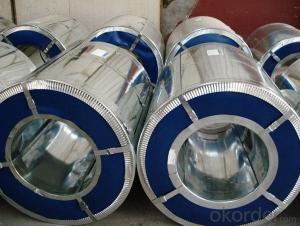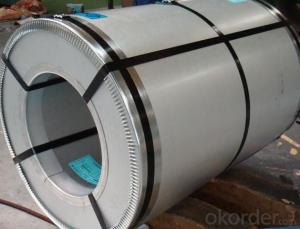GL Coil for Warehouse Roofs Used for Construction
- Loading Port:
- Tianjin
- Payment Terms:
- TT or LC
- Min Order Qty:
- 50 m.t.
- Supply Capability:
- 10000 m.t./month
OKorder Service Pledge
OKorder Financial Service
You Might Also Like
GL coil for Warehouse Roofs Used for Construction
Main Specification for GL Coi
Products | GI/GL | PPGI/PPGL | CR | Corrugated Steel Sheet |
Grade | SGCC, CGCC, SPCC, ST01Z, DX51D, A653 | |||
Standard | JIS G3302 / JIS G3312 / ASTM A653M / A924M 1998 | |||
Origin | China(Mainland) | |||
Raw material | SGCC, SPCC, DC51D, SGHC,A653, | |||
Certificate | ISO9001.ISO14001.OHSAS18001 | |||
Technique | hot rolled/ | pre-painted, hot rolled | cold rolled | pre-painted, hot rolled/cold rolled |
Thickness | 0.12mm-2.0mm | |||
Width | 600mm-1250mm | |||
Tolerance | thickness+/-0.01mm | |||
T Bending | ≤ 3T/4T | |||
Anti-MEK Wiping | 100times | |||
Zinc coating | ≤275g /m2 | |||
Color options | RAL Color System or as per buyer’s color sample. | |||
Type of | 2/1 or 2/2 coating, or customized | 2/1 or 2/2 coating, or customized | ||
Coil weight | 3-8MT | 3-8MT | 12-13MT | 3-8MT |
Type | Coil or Plate | |||
Spangle | big / small / no spangle | |||
Hardness | Soft---full hard | |||
Supply ability | 550,000/3 | 450,000/4 | 280,000/2 | 280,000/2 |
Payment term | T/T; L/C; T/T & L/C | |||
Price | FOB/CFR/CNF/CIF | |||
Delivery time | around 10-15 days after T/T payment or L/C is received. | |||
FAQ
How is the quality of your products?
Our products are manufactured strictly according to national and international standard, and we take a test on every pipe before delivered out. If you want to see our quality certifications and all kinds of testing report, please just ask us for it.
Guaranteed:
If products' quality doesn’t match the description we give or promise before you place your order, we promise 100% refund.
How about price?
Yes, we are factory and be able to give you lowest price below market one, and we have a policy that " for saving time and absolutely honest business attitude, we quote as lowest as possible for any customer, and discount can be given according to quantity”, if you like bargain and factory price is not low enough as you think, just don't waste your time.
Please trust the quotation we would give you, it is professional one.
Why should you choose us?
Chose happens because of quality, then price, we can give you both. Additionally, we can also offer professional products inquiry, products knowledge train (for agents),
Quick goods delivery, our factories locate near the seaport, which is very convenient for transportation.
Picture:
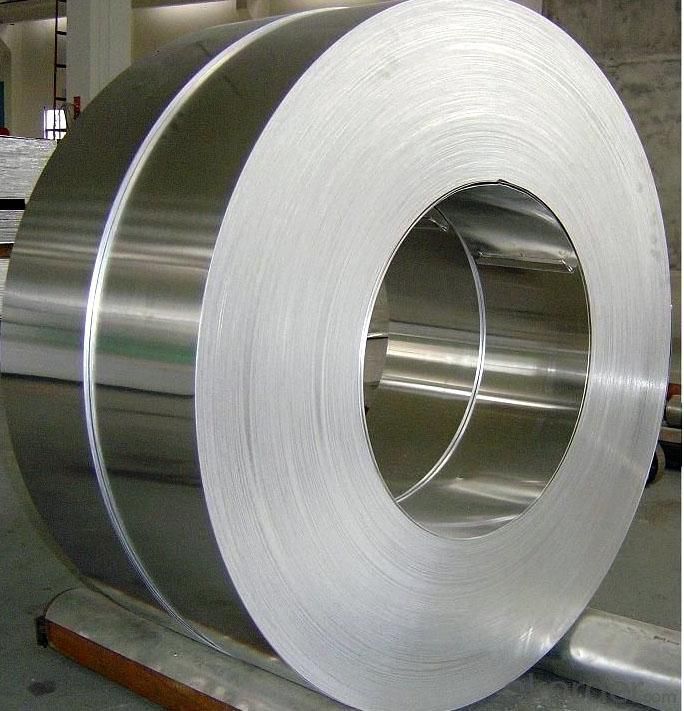
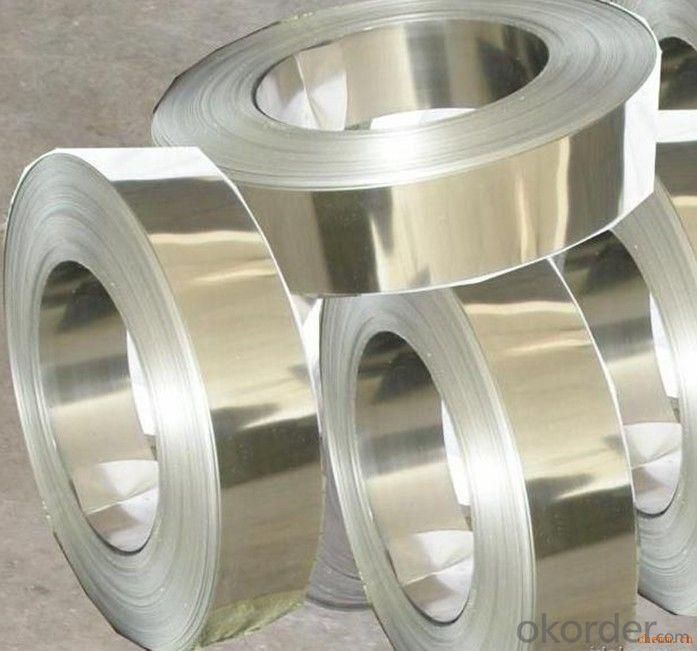
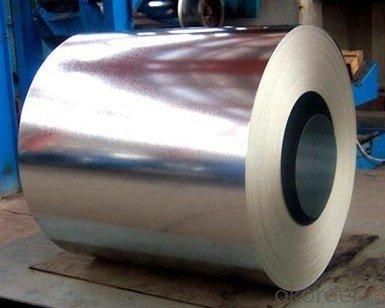
- Q:What are the different methods of tempering steel coils?
- There exist numerous techniques for tempering steel coils, each possessing unique advantages and disadvantages. Some of the most prevalent techniques include: 1. Air cooling: This method, the simplest and most commonly employed, involves heating the coils to a specific temperature and allowing them to cool naturally in the surrounding air. Although relatively speedy and cost-effective, this technique can result in uneven cooling and may lack precise control over the final properties of the steel. 2. Water quenching: In this approach, the steel coils are heated and then rapidly cooled by immersing them in a water bath. Water quenching provides a swifter and more controlled cooling rate than air cooling, resulting in increased hardness and strength. However, it may also cause heightened distortion and the development of internal stresses in the steel. 3. Oil quenching: Similar to water quenching, this method entails immersing the steel coils in an oil bath to rapidly cool them. Oil quenching offers a slower and more uniform cooling rate in comparison to water quenching, leading to reduced distortion and internal stresses. Nevertheless, it yields slightly lower hardness and strength than water quenching. 4. Salt bath quenching: This technique necessitates immersing the steel coils in a heated bath of molten salt for rapid cooling. Salt bath quenching ensures an even and controlled cooling rate, resulting in improved hardness and strength compared to air or water quenching. However, it requires specialized equipment and may not be suitable for all steel types. 5. Induction hardening: In this method, the steel coils undergo induction heating before being rapidly cooled using air, water, or oil quenching. Induction hardening permits precise control over the heating and cooling process, thereby achieving specific hardness and strength properties in desired areas of the steel. Nonetheless, it demands specialized equipment and is generally employed for specific applications or sections of the steel coils. Ultimately, the choice of tempering method relies on various factors, including the desired properties of the steel coils, the type of steel employed, and the specific requirements of the end application.
- Q:I am looking at website on google based on the terms structural steel fabrication and simply steel fabricationI know that there must be a difference between the two terms, but it seems that many website authors use the two terms interchangeably.Do you know the key differences between the two terms?
- Structural steel is steel construction material, a profile, formed with a specific shape or cross section and certain standards of chemical composition and strength. Structural steel shape, size, composition, strength, storage, etc, is regulated in most industrialized countries. Fabrication, when used as an industrial term, applies to the building of machines, structures and other equipment, by cutting, shaping and assembling components made from raw materials. Small businesses that specialize in metal are called fab shops. Steel fabrication shops and machine shops have overlapping capabilities, but fabrication shops generally concentrate on the metal preparation, welding and assembly aspect while the machine shop is more concerned with the machining of parts.
- Q:i know theres steel in it but what else?
- Corosion Resistant steel..... It does corrode... just at a slower rate then normal steel.
- Q:like building steel beams. i'm pretty sure with a sawzall.
- I am going to take a slightly different approach. Once the structural steel is manufactured and then brought to the fabricator, not much heat is applied to the steel. It is normally punched, sheared or whatever buy the use of a lot of heat on it is normally not allowed due to the change in the properties of the steel. Once in the field to be erected, the cutting or welding on it are held to absolute minimums and most of the time not allowed at all.
- Q:What are the common certifications required for steel coils?
- The certifications needed for steel coils differ based on the industry and purpose of the coils. However, there are various certifications that are commonly requested. 1. ISO 9001: This certification ensures that the manufacturer has established a quality management system that meets global standards. It confirms that the manufacturer has the necessary procedures and controls in place to consistently produce high-quality steel coils. 2. ISO 14001: This certification concentrates on environmental management systems. It guarantees that the manufacturer is dedicated to minimizing its environmental impact and reducing waste during the production process. 3. ISO 45001: This certification relates to occupational health and safety management systems. It ensures that the manufacturer has implemented measures to safeguard the health and safety of its employees and stakeholders. 4. ASTM International Standards: The American Society for Testing and Materials (ASTM) has introduced various standards for steel coils. These standards include chemical composition, mechanical properties, and dimensional tolerances. Adhering to these standards guarantees that the coils meet the specified requirements and are suitable for their intended use. 5. EN Standards: The European Committee for Standardization (CEN) has developed a series of standards for steel coils, known as EN standards. These standards cover similar aspects as ASTM standards but are specific to the European market. 6. JIS Standards: The Japanese Industrial Standards (JIS) are widely used in the steel industry in Japan and other Asian countries. Complying with JIS standards ensures that the coils meet the specific requirements of the Japanese market. 7. Certifications specific to products: Depending on the application of the steel coils, additional certifications may be necessary. For instance, if the coils are intended for automotive use, certifications like ISO/TS 16949 (Quality Management Systems for the Automotive Industry) may be required. It is crucial to note that the specific certifications needed may differ based on the region, industry, and customer requirements. Manufacturers should consult their customers and industry standards organizations to determine the exact certifications necessary for their steel coils.
- Q:Could someone please explain what happens when steel is heat treated and why these happenings cause the steel to become harder? Please dig down into the micro details of the crystallites but in somewhat laymen's terms. Also describe the processes which achieve these results; if you have the time. Thanks for your time and effort.
- If you are speaking of a micro mini skirt, then i would think that the answer would be 1000 Hostess HoHo's would equal a macro skirt.
- Q:I would like to build steel galvanization plant.
- How big of a kettle do you want to go with? A small 6-10 foot kettle would work fine for spinner work (small parts ran in baskets) but if you want to handle large beams and so forth you will need to have at least a 25 foot or longer kettle. You will need tanks for caustic,acid,rinsing,and preflux solutions. If you go with sulfuric acid it will have to be heated. The caustic and flux tanks need to be heated in any case.You will also need a bag house to control smoke coming off the kettle. First you should look into permits such to see if you can actually build this plant. Galvanizing is nasty work and the laws and regs are strict. Former Kettleman
- Q:What material is strongest? Human bone, steel, or concrete?
- Steel is used to shape and reinforce concrete. Steel is also used in cutting bones in surgery and repairing bone through use of steel pins and braces. So, the answer is most definitely steel. In answer to your watch question, the volume of concrete was greater than that of your watch. The question of large volume vs. small volume is an easy one. Ten tons of human bone would easily reduce a 1 lb block of concrete to powder. Likewise, ten tons of concrete would snap a steel bar like a toothpick. Your watch had much less volume than the concrete you dropped it on. Furthermore, with enough force, your watch would have made a hole in the concrete, but its acceleration was not enough to counter the impacting force of the solid concrete reinforced by the soil and clay below it.
- Q:What are the common coil handling challenges?
- Some common coil handling challenges include the difficulty in safely lifting and moving heavy coils, ensuring proper alignment and positioning during handling, preventing damage to the coils or surrounding equipment, and efficiently managing coil storage and retrieval.
1. Manufacturer Overview |
|
|---|---|
| Location | |
| Year Established | |
| Annual Output Value | |
| Main Markets | |
| Company Certifications | |
2. Manufacturer Certificates |
|
|---|---|
| a) Certification Name | |
| Range | |
| Reference | |
| Validity Period | |
3. Manufacturer Capability |
|
|---|---|
| a)Trade Capacity | |
| Nearest Port | |
| Export Percentage | |
| No.of Employees in Trade Department | |
| Language Spoken: | |
| b)Factory Information | |
| Factory Size: | |
| No. of Production Lines | |
| Contract Manufacturing | |
| Product Price Range | |
Send your message to us
GL Coil for Warehouse Roofs Used for Construction
- Loading Port:
- Tianjin
- Payment Terms:
- TT or LC
- Min Order Qty:
- 50 m.t.
- Supply Capability:
- 10000 m.t./month
OKorder Service Pledge
OKorder Financial Service
Similar products
New products
Hot products
Hot Searches
Related keywords

